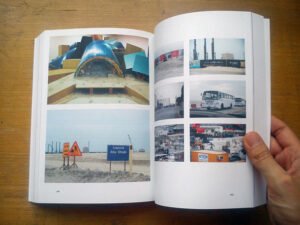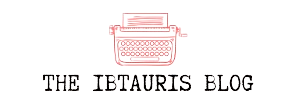We recently engaged in a conversation with Anthony Downey about “Uncommon Grounds,” a collaborative project with the London-based online publishing forum Ibraaz.
We announced our partnership in 2012, aiming to produce volumes centered on visual culture in North Africa and the Middle East.
After substantial effort, we successfully released the first volume, “Uncommon Grounds: New Media and Critical Practices in the Middle East and North Africa,” in September.
This publication gathers a diverse group of internationally renowned and emerging figures, spanning academics, writers, artists, curators, activists, and filmmakers.
“Uncommon Grounds” critically examines the development and utilization of new media in the visual culture of the Middle East and North Africa.
Anthony Downey, the Editor in Chief at Ibraaz, sheds light on the origins of Ibraaz, the forum’s mission, and provides insights into what readers can anticipate in future volumes.
Also read: The Universe of Satyajit Ray
How And When Was Ibraaz Founded?
In 2009, Kamel Lazaar, Lina Lazaar, and Anthony Downey initiated discussions that led to the founding of Ibraaz. The planning phase extended for two more years before officially launching during the 54th Venice Biennial in June 2011. It stands as an initiative of the Kamel Lazaar Foundation.
Would You Say Ibraaz Has a Particular Mission?
From the outset, it has been explicit that Ibraaz has a specific mission. The primary goal, emphasized in conversations with Mr. Lazaar, is producing critical cultural knowledge in North Africa and the Middle East.
Acknowledging existing efforts, there’s a conviction that this mission requires sustainable support. The Kamel Lazaar Foundation committed to initiating and supporting Ibraaz. As a research and publishing forum with a steadfast dedication to this singular goal for the foreseeable future.Broader Editorial Policy: Art as Practice and Global Context
The editorial policy of both the Kamel Lazaar Foundation and Ibraaz extends beyond the specific mission. It delves into the formal and conceptual aspects informing art as a practice.

In a broader context, there is an interest in exploring how art contributes to the long-term establishment of infrastructures and institutions.
While primarily focused on North Africa and the Middle East, these regions are viewed as productive prisms for contemplating art and its institutions.
This perspective is within an increasingly globalized context.
Uncommon Grounds features work by academics, writers, artists, curators, activists and filmmakers. Are there any particular contributors who captured the mood of the time frame they are focusing on?
It is arguable that they all did, as much of what is included in the volume was written as a direct response to what has been happening over the last 4-5 years.
However, we were mindful that these essays and contributions could easily become fixed or reduced to a singular event.
In this respect, I think essays by Laura U. Marks (‘Arab Glitch’), Dina Matar (‘A Critical Reflection on Aesthetics and Politics in the Digital Age’), Franco ‘Bifo’ Berardi (‘The Paradox of Media Activism’), Nat Muller (‘Performing the Undead’), Philip Rizk (’30 2011 is not 1968′), and Maymanah Farhat (‘New Media and the Spectacle of the War on Terror’) were very careful about the historical contexts for these debates and the need to look at what was actually happening on the ground, so to speak, without succumbing to the rhetoric of revolution that seems to have engulfed debates about cultural production across the region and beyond.
While Ibraaz’s focus is upon visual culture and media practices in North Africa and the Middle East, presumably we are right to believe that this research can act as a prism through which to elaborate upon the use of new media globally?
Absolutely, that was a key element in the editorial line that I took whilst developing this volume.
Whilst true that events across the extended region, including the so-called ‘Arab Spring,’ have informed key elements of cultural practice, for better or worse.
Artists and artworks explored throughout Uncommon Grounds are decidedly not provincial, nor localized in their ambitions.
The topographical, cultural, and political complexities of North Africa and the Middle East are a prism to elaborate on the widespread usage of new media globally.
This, again, answers to one of the overarching ambitions of Ibraaz and its research
In Your Introduction To The Volume, You Say That Art As A Practice ‘Is Always Already Political.’ What Do You Mean By This?
Responding briefly to this complex question is indeed challenging, as it requires substantial exposition to adequately address its nuances.
Viewing politics determines who can speak, be heard, or be seen, legitimizing or de-legitimizing opposition to norms. In this context, art often reconceptualizes what can be seen, said, or understood.
Art engages in the process of re-imagining or rethinking the world and the possibilities it holds. It inherently possesses a political dimension without necessarily aligning with a specific side in a debate or adhering to a singular political line.
Instead, it encourages a field of vision that relies on imagination and critical engagement with the world. Contemporary art often supports prevailing political orthodoxies, including apparent compliance with neo-liberal doctrine. However, delving into this aspect would require a separate and extensive exploration.
This enduring question is undoubtedly one that will persist and evolve in various contexts. A specific concern revolves around scrutinizing the rapid rebranding of the so-called Arab Uprisings as the “Twitter” or “Facebook revolution.” This prompts an essential question: who precisely is benefiting from this narrative?
Examining social media companies’ market share growth when the terms “Facebook” or “Twitter revolution” are used is intriguing. Additionally, following Edward Snowden’s NSA revelations, inquiring into whose interests so-called social media genuinely serves becomes pertinent.
“Dissonant Archives: Contemporary Visual Culture And Contested Narratives In The Middle East” Is Out Spring 2015. What Can We Expect?
“Dissonant Archives” will delve into themes introduced in “Uncommon Grounds,” particularly the role of digital archives. The focus is addressing the archive as a contested site of knowledge production, highlighting its dual role in shaping the future and understanding the past.
The concept of an archive carries an inherent sense of both responsiveness to and responsibility for the future.
During the volume’s production, many questions arose. Here, exploring all is impractical, but two key inquiries emerged: What is the historical role of archives, and how are artists and institutions currently using them in the region? Additionally, the volume aims to investigate the types of knowledge archives generate, encompassing both artistic practices and institutional contexts.
While these questions may seem simple initially, the answers are complex and delve into a crucial issue in contemporary culture. Specifically, to what extent does culture intersect with, question, negotiate, and challenge the political and social landscapes of our time?
The volume brings together an exceptional lineup of writers, offering a diverse range of responses to these complex issues. Contributors include Ruanne Abou-Rahme, Basel Abbas, Lawrence Abu Hamdan, John Akomfrah, and Jananne Al-Ani.


